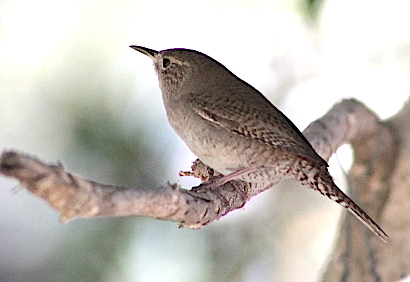More magic!
I can’t post video any other way on WordPress so I hope you’ll be able to view this spectacular bobcat that came to my garden DURING THE DAY with a RAT in his mouth!
Here’s how the story unfolds: Yesterday morning around 6:30 a.m., I saw something on the lawn. I went out to look and it was a mangled rat. Hmmm, I said to myself, that’s gross, but I bet a hawk or owl dropped it. A little later, I walked up the stairs and took the SD card out of my wildlife camera that’s situated on the lower half of the hill and brought it inside to check, like I do on a weekly basis.
I was absolutely blown away by this video!
Bobcats (and coyotes) visit most nights, but this is the very first time I’ve captured video of a daytime stroll through here — with the added bonus of a meal.
It might look as if he walks away, but keep watching for his return along with an early dinner. As he makes his way down the steps, I realize the bobcat is the reason for the rodent remains I found on the lawn. This bobkitty is so jawdroppingly beautiful, I’ve watched the video at least a dozen times.
Bobcats are incredibly elusive animals and a bobcat sighting is a rare occurrence. Although bobcats are primarily nocturnal, they may be seen during the day while hunting/foraging for food, especially between April and July when they are most likely to have dependent young.
The only part of this momentous event that makes me a little sad is that I was HERE at that exact time and didn’t have a clue that I should have looked out the window that faces the garden as it would have been the greatest day in my life, right up there with seeing wolves in the Lamar Valley at Yellowstone, (although the temptation to want to run outside and say “here kitty, kitty” and pet him is strong.)
I am beyond grateful that these creatures feel that my garden (and me) are a safe haven to explore.
What might it mean? Seeing a bobcat carries a powerful spiritual message. It could be a sign that we need to tap into our inner strength and independence. The bobcat embodies resilience, encouraging us to stand our ground in the face of challenges.
Additionally, the presence of a bobcat might be a call to explore the mysteries of our life. It’s an invitation to delve deeper into our personal spirituality and uncover truths that may be hidden or suppressed. A bobcat can indeed be seen as a good luck spiritual symbol. https://lifeadventurously.com/spiritual-meaning-of-bob-cat/
This is a good time to remind us all about the horrors of using poison to control rodents:
Rat poisons don’t just kill rats; they kill wildlife too. Wildlife species are exposed to anticoagulant rat poisons when the poisons are used in urban and agricultural areas to target species such as rodents. But those who consume the poisons do not die immediately of the internal bleeding they are intended to cause. It can take more than a week for a poisoned rodent to die. In the meantime, the poisoned animal may be vulnerable to predators, and if a predator such as a bobcat preys on the poisoned rodent, the bobcat becomes poisoned too. Thus, poisons enter local food webs and become especially harmful to animals at the top of the food chain. Through a process called bioaccumulation, animals at the top of the food chain absorb toxins from eating lots of different prey animals, but their organs cannot filter out the toxins, causing the poisons to accumulate in their systems. As a result, some of the most iconic species in California – bobcats, coyotes, foxes, mountain lions, owls – are the most vulnerable to this indirect poisoning. https://panthera.org/blog-post/surprising-effects-rat-poison-bobcats


















